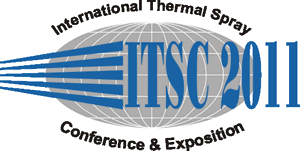
|
3016 |
|
Theory and experiment on hollow spherical powders production |
|
Oleg Solonenko* / Khristianovich Institute of Theoretical and Applied Mechanics, Siberian Branch, Russian Academy of Sciences, Russia Igor Gulyaev/ Khristianovich Institute of Theoretical and Applied Mechanics, SB RAS, Russia Andrey Smirnov/ Khristianovich Institute of Theoretical and Applied Mechanics, SB RAS, Russia |
|
Hollow spherical (HOSP) powders of metals, metal alloys and oxide ceramics are of great interest for thermal spraying, powder metallurgy and material science. HOSP powders can be produced by different method. For the last decade due to constant rise of interest in HOSP powders and expansion of areas of their application, the efforts of researchers, including authors of present paper, are focused on developing methods of producing the hollow microspheres, based on processing of agglomerated powders in thermal plasma. Exists a range of methods of producing the agglomerated powders with size of dozens of microns, which particles consist of several uniformly mixed nano- submicro- and microsized powder components: 1) spray drying, 2) processing of atomized suspensions; 3) mechanical treatment of powder mixtures in high-energy planetary mills, etc. A brief overview the results of R&D directed to production of various HOSP oxide and metallic powders (±-alumina, zirconia stabilized by yttria, quartz, nickel and nickel allow) by the use of DC torches with interelectrode insert (cascade torches) and twin torch is presented. In particular, the theoretical fundamentals providing the requirements to plasma flow in criterion view have been developed. A physical and mathematical model of hollow particle behavior in plasma flow for prediction of its diameter and thickness of shell is developed and discussed. |